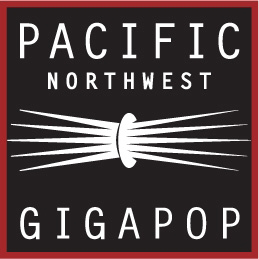Trans-Pacific Agreement Signed To Increase Global Ultra-High-Performance Networking
SEATTLE, WA and LOS ANGELES, CA – Representatives of the Pacific Wave international network peering facility and the Trans-Eurasia Information Network*Corporation Center (TEIN*CC) today announced the signing of a Memorandum of Understanding highlighting the two organizations’ desire to work together to promote advanced networking, collaboration, and advocacy among and on behalf of the Pacific Rim research and education communities.
With this Memorandum of Understanding in effect, researchers across the Pacific Rim will be even better able to collaborate globally on world-class research projects in areas such as radio astronomy, distributed (grid) computing, telemedicine, climatology, digital cinema, high-energy physics, and more. Global educational collaboration will also be further enabled, as high-performance networks have enhanced distributed classrooms and student exchange programs through high-quality videoconferencing and other technologies.
“Pacific Wave is an integral part of the worldwide fabric of research and education networks,” said Louis Fox, President and CEO of CENIC, the nonprofit corporation which, with the Pacific Northwest Gigapop, runs Pacific Wave with the support of the University of Washington and the University of Southern California. “Formalizing the relationship with TEIN*CC is yet another building block in ensuring robust, high-performance connectivity of the sort that is essential in today’s landscape of borderless global collaboration.”
“This relationship with TEIN*CC further emphasizes the vital role Pacific Wave plays among advanced research and education networks,” adds Pacific Northwest Gigapop CEO Ron Johnson. “Each such agreement between the world’s advanced networks and exchanges strengthens the web of interconnected high-performance optical networks, enabling them to function as the foundation beneath so much 21st century research and education.”
With a total of five exchange points located in Seattle, Sunnyvale, and Los Angeles and connected by a 100G fiber backbone, the Pacific Wave international peering facility provides research and education networks throughout the Pacific Rim and beyond the opportunity to peer with one another, removing international borders as boundaries to network-enabled global collaboration and innovation. Current participants represent networks and agencies from Australia, Canada, China, Japan, Korea, Mexico, New Zealand, Qatar, Singapore, South America, Taiwan, and the United States. Many multi-national networks such as GLORIAD, NORDUnet (Nordic countries), and redCLARA (Central and South America) also participate, bringing the total of nations whose research and education communities can collaborate on network-enabled projects via Pacific Wave to more than 40.
Launched at the Asia-Europe Meeting (ASEM) 3 Summit in Seoul in 2001, the TEIN network created by the Trans-Eurasia Information Network initiative began with a single link between France and South Korea and evolved to provide a dedicated high-capacity Internet network between research and education communities in the Asia Pacific region. Through westbound links to GN3 (formerly GÉANT), its pan-European counterpart, TEIN offers direct high-speed intercontinental connectivity, and with support from the European Commission, the TEIN partner countries now include Australia, Bangladesh, Bhutan, Cambodia, China, India, Indonesia, Japan, South Korea, Laos, Malaysia, Nepal, Pakistan, the Philippines, Singapore, Sri Lanka, Thailand, and Vietnam. Now in its third generation as TEIN3, the network’s upgrade to TEIN4 will receive funding support from the European Commission and from the participating National Research and Education Networks (NRENs).
About Pacific Wave
Pacific Wave is a joint project between the Corporation for Education Network Initiatives in California (CENIC) and the Pacific Northwest Gigapop (PNWGP), and is operated in collaboration with the University of Southern California and the University of Washington. The distributed design of Pacific Wave allows participants to engage in bilateral peerings regardless of which node they are physically connected to. This design offers significant flexibility and opportunities for networks utilizing any of a dozen trans-Pacific cables for their circuits as well as for building redundancy and robustness into peering relationships that would otherwise be cost prohibitive and complex . For more information, please visit http://www.pacificwave.net/.
